Poisonous indoor plants
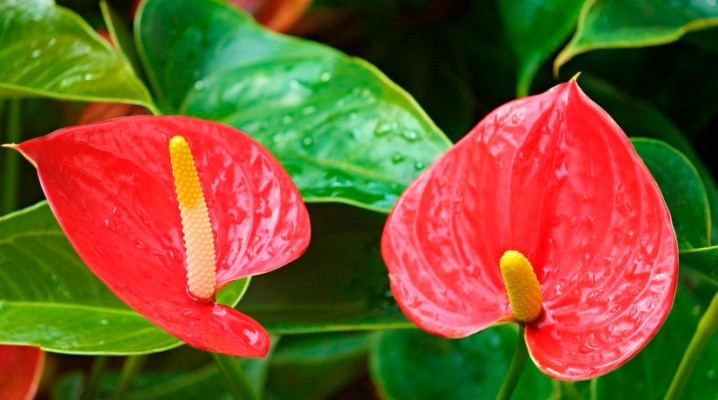
Throughout our history, we live next to plants, because humanity simply cannot do without them. They are our "lungs", food, medicine, decoration. Most of the representatives of the flora are useful and harmless, but there are categories of flowers that are best only admired, beware of their strong toxicity. On the windowsill, you can grow a medicinal flower garden, or you can breed poisonous beauties. How to distinguish them and how they are dangerous, we will tell in our article.
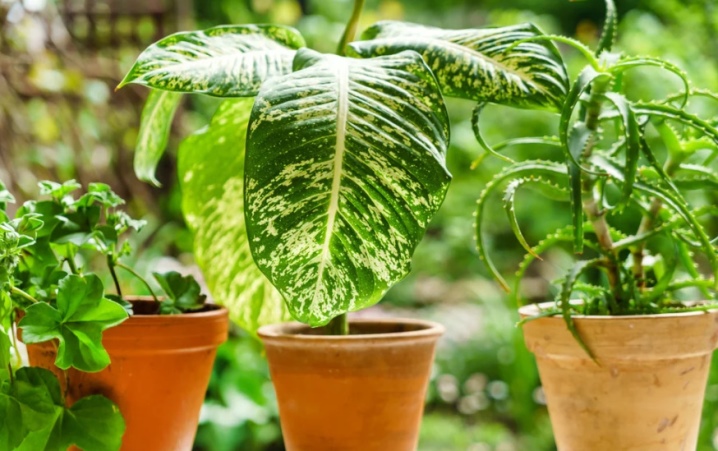
Peculiarities
Many houseplants come from tropical forests, where they survived as best they could in their cramped habitats. Protecting themselves from being eaten and ruined, some representatives of the flora acquired toxic properties. The process lasted for thousands of years, and they remain in the status of domestic plants for only a few centuries. We will have to accept and accept beautiful indoor flowers along with their features.
And so that trouble does not happen, you just need to know which of them are poisonous, protect children and animals from them, observe safety precautions yourself when breeding crops.
If you do everything right, you can grow poisonous beauty on the windowsill all your life, without harm to your own health.
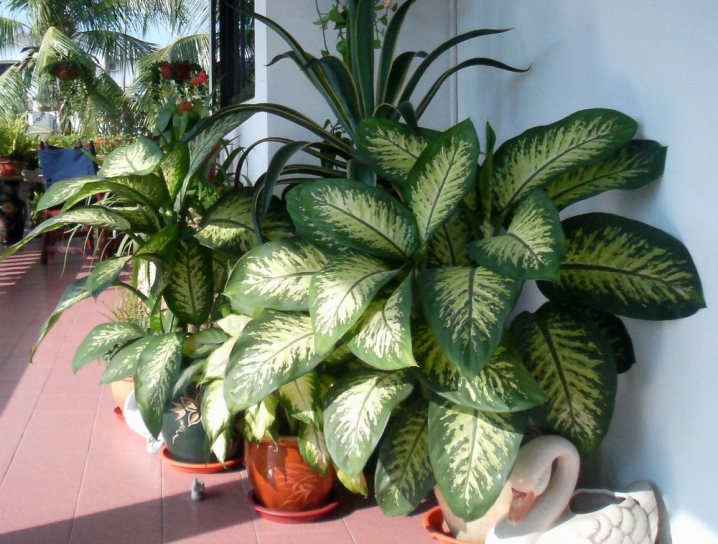
But sometimes the question arises why, among millions of flowers, people choose their poisonous representatives. It turns out that toxic plants have a number of features that flower growers cannot resist:
- These species were formed in tropical conditions unusual for us, and many of them seem to us exotic, not like the surrounding flora.
- We wouldn't keep them on the windowsills if they weren't so great. Even those that hardly bloom have incredibly beautiful leaves.
- Another feature is that poisonous flowers disguise themselves as "decent" and do not report their toxicity. The florist himself should ask what kind of "miracle" he brought into the house.
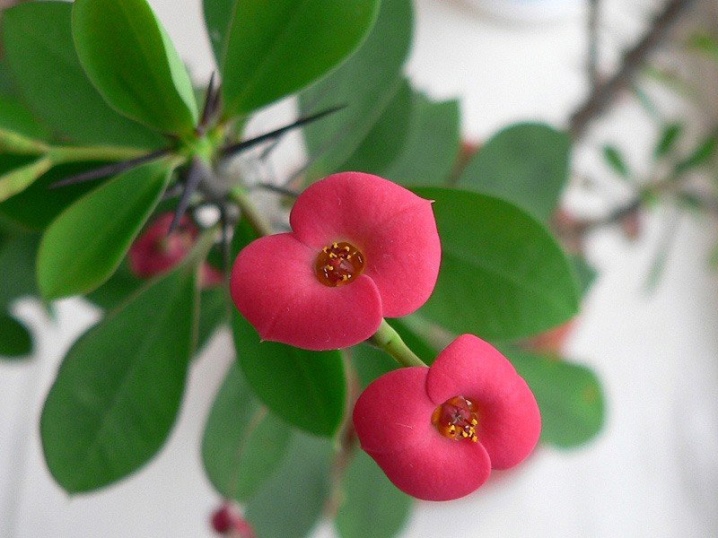
Given the special beauty and unusualness of poisonous ornamental plants, you should not give them up at all. If children and animals do not have access to flowers and allergy sufferers and asthmatics do not live in the house, the presence of such plants will not cause much harm.
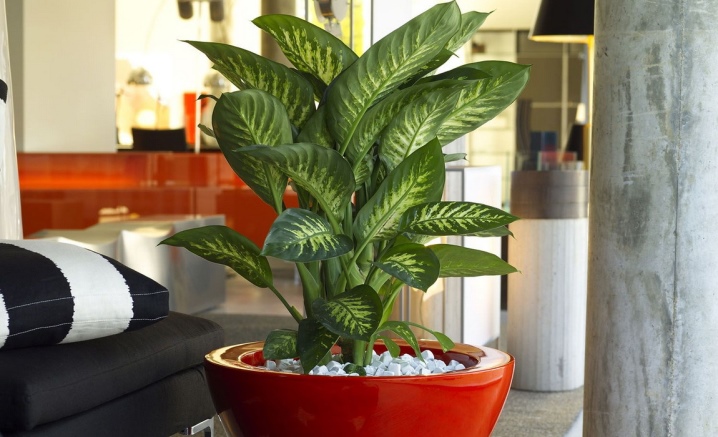
Are they dangerous?
In almost all poisonous plants, the juice has a poisonous effect, which gets on the skin, in the eyes or in the esophagus, it is in the juice that poisonous substances are most concentrated. But there are flowers in which pollen and aroma have the same dangerous effect, for example, almost all types of lilies in allergy sufferers cause swelling, suffocation and other painful symptoms... You should not make bouquets of them and install them in rooms where people live.

You can get poisoned by a poisonous plant in different ways.
- The most common and dangerous of these is eating. None of the adults in their right mind will eat a home flower, unless this is due to medical indications. But children and animals can try, and it's good that bitterness scares them off, and the first bite is not followed by the second.
- Breathing in the aromas of certain plants can cause headaches, hallucinations, and even fainting.
- The very earth in which the flower grows is saturated with toxins, so it is easy to get poisoned by contact with it.
- If the animal drinks water from the pan of such a plant, it can be poisoned.
- Cutting off problem stems and leaves of a flower without gloves can cause skin burns. You should also protect yourself when transplanting a plant.

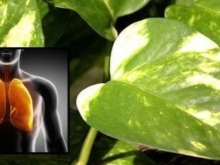
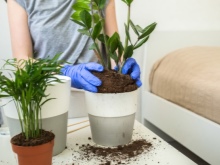
If poisoning does occur, the symptoms may be different, it all depends on the poison that is present in the flower. The most common are:
- digestive system disorder, nausea, vomiting;
- swelling of the mouth;
- labored breathing;
- circulatory disorders;
- lowering blood pressure;
- arrhythmia;
- burns and skin rashes;
- redness and burns of the eyes;
- disorder of consciousness, hallucinations.



At the first symptoms, you should seek medical help, especially if children are victims of poisoning.
The quickly removed poison from the body may not affect vital organs, and intoxication will pass without consequences and complications.

Types and their descriptions
Latin wisdom says: "forewarned is forearmed." Sometimes people keep flowers on the windowsill all their lives and do not know that they are poisonous. After reading the list and description of toxic plants, you can unexpectedly get information about your own flowers and take action according to the circumstances.

Adenium
Perennial succulents, abundantly flowering shrubs, belong to the Kutrovy family.
In their natural environment, they are common in Africa and the Arabian Peninsula, they can grow up to 3.5 m.
Such a beautiful flower is difficult to refuse, but care must be taken when growing it. The sap of the plant is highly poisonous - a person, using it, will feel bad, and an animal with a lighter weight may die.
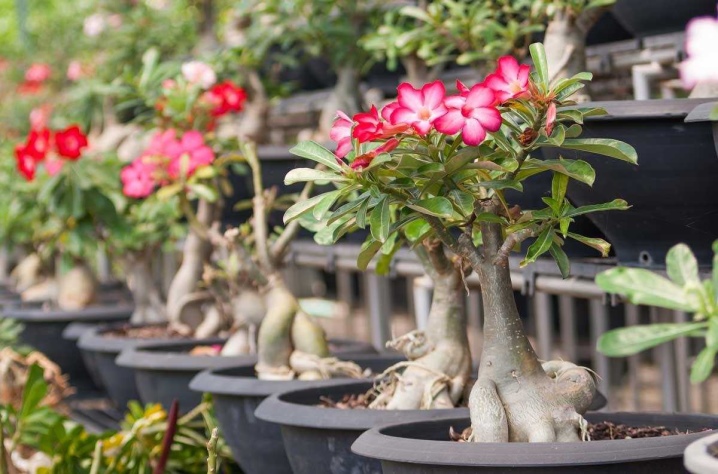
Striped aloe
Aloe naturally grows in African rainforests, Madagascar and the Arabian Peninsula. Treat succulents, that is, it has special fabrics for the accumulation of moisture. Scientists know more than 500 species of this plant. A potted species is often grown: aloe vera (Vera) or tree-like, they are loved by the population for their medicinal properties.
Striped aloe is not used for medicinal purposes, the juice causes uterine and intestinal bleeding, the plant is especially dangerous for pregnant women.

Amaryllis Belladonna
"Belladonna" in translation from Italian means "beautiful lady". This bulbous plant is really delicious, it has the most delicate aroma. Flowers have different colors: white, pink, red, purple. Amaryllis originates from South Africa.
All parts of the plant contain lycorin, especially in the bulbs, so it is better to transplant the flower with gloves.
Licorin is used in pharmaceuticals, but in very small doses, it is taken as an expectorant. When caring for a plant, you need to make sure that its juice does not fall on your hands. If you taste the onion, you may experience nausea, vomiting, decreased blood pressure, and even seizures.

Anthurium
The name of the plant was given by the ancient Greeks, in translation it means "flower and tail", which is very similar to the inflorescence of anthurium. The plant belongs to the genus Aronnikovs, comes from the tropical forests of South America. The flower has its poisonous properties due to the content of oxalic acid salts (oxalates).
The juice, getting on the skin and mucous membranes, causes an irritating effect, can provoke burns and ulcers.
The degree of damage depends on the resistance of the person himself to allergens. In the oral cavity, the plant can leave a burn and swelling.

Hydrangea
Hydrangea came to Europe in the XIV century from South and East Asia. In addition to these regions, it grows in the wild on the American continents, in Japan and in the Far East of Russia. Flowers have a varied palette: white, pink, blue, lilac.
Cyanogenic glycosides, which are present in all parts of the plant, pose a danger to humans and animals.
You can admire and touch the flower, but you cannot let the juice get into the body. The consequence of poisoning will be vomiting, muscle weakness, circulatory disorders, severe itching and sweating, and as a result - dehydration.

Dieffenbachia
An evergreen plant of the Aroid family, with large variegated leaves, originally from America. It looks good in the interior, purifies the air, but at the same time it is dangerous for its toxicity caused by the presence of a large number of oxalate crystals. Once in the body, the sap of the plant causes pain in the mouth, swelling of the throat and tongue, then digestive disorders, cramps and muscle paralysis occur.
Contact with the skin causes dermatitis, and with the eyes - corneal burns and conjunctivitis.

Zamioculcas zamielistny
Succulent of the Aroid family, native to tropical African forests.
Feng shui fans call it the "dollar tree", they believe that the plant is capable of attracting money.
The plant is poisonous, if a small amount enters the body, an adult will feel mild malaise, and a child or pets (due to low weight) may experience serious poisoning with nausea, vomiting, severe chills, convulsions and diarrhea. In severe cases, hallucinations and fainting occur; such children are treated in a hospital. In addition to sap, plant pollen is also dangerous. If you inhale it, you feel similar symptoms with the SARS disease, and when it gets on the skin, the pollen causes a rash and irritation.

Lilies
Flowers with mesmerizing beauty, sung by poets, have a rich palette of colors. The genus Lily has more than 110 species common in Europe and Asia. On their basis, breeders bred 11 thousand varieties of daylilies.

All varieties of lilies are poisonous, but it is especially dangerous to contact pets and people prone to allergic reactions with them.
The cat may not gnaw the flower, but only lick the pollen that has fallen on the coat, and in an hour it will become lethargic, very soon renal failure will develop and death may occur. The animal should be immediately taken to the veterinary clinic, after 5 hours it will be too late. When growing lilies in the garden, you should not carry them into the house. Even odorless varieties that are bred by breeders are dangerous to our health.
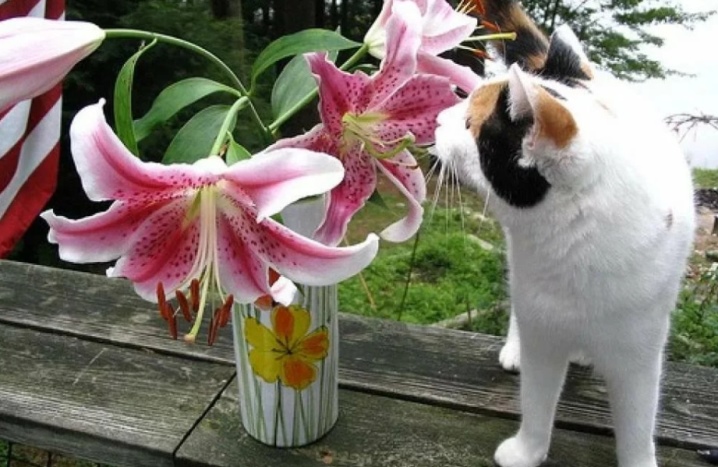
Caladium
Plants of the genus Aroid came to our windowsills from the tropical regions of America. They have brightly colored leaves of amazing beauty and a varied palette. The plant is toxic to humans and animals. Having swallowed any part of it, one should expect swelling of the entire mouth part, heavy breathing, difficulty speaking, impaired swallowing.
If the airways are blocked, death is inevitable.
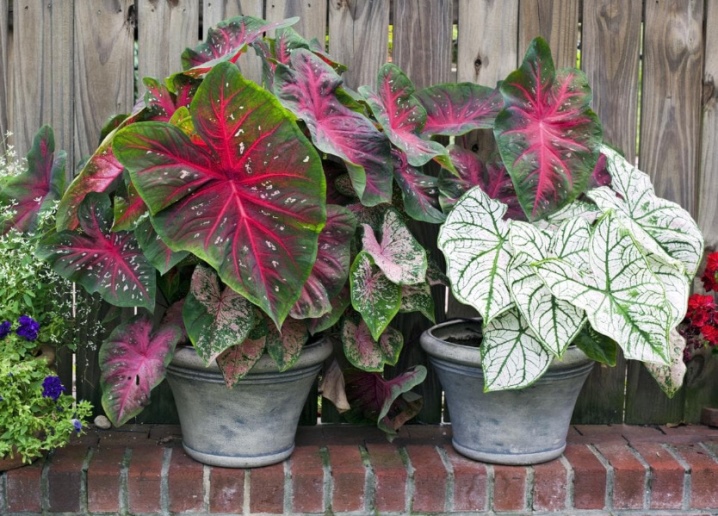
Spurge
The largest genus of the Euphorbia family, according to various sources, it contains from 800 to 2000 species, on the territory of Russia there are about 160 of them. For its variety and exotic appearance, euphorbia was chosen by gardeners for their home collections.
When planting this plant on the windowsill, it should be remembered that its caustic milky juice is unsafe.
If the juice gets into water or food within half a day after consumption, toxic gastroenteritis may develop with all the ensuing symptoms: burning and pain in the digestive area, flatulence, diarrhea, headache, increased heart rate and decreased blood pressure. If the juice comes into contact with the skin, redness, burns and ulcers can be expected.

Monstera
A large plant, liana, of the Aroid family, grows in the tropical rainforests of America. Since the 19th century, it was introduced and is still successfully settling in Southeast Asia. Florists love the monstera for its unusual carved leaves.
At home, you must carefully handle the juice of the plant.
Once in the oral cavity, it causes burns and profuse salivation, then the intestines become inflamed, the victim is vomiting, and gastric bleeding may open.

Oleander
The shrub belongs to the Kutrov family and is distributed in the subtropical parts of the planet. Very beautiful, used in landscape design in regions with a suitable climate (Crimea, Caucasus), in cooler areas, is used as a houseplant.The bush sap contains cardiac glycosides and is used in pharmacology. But at the same time, the plant is very poisonous, requires careful handling. The dangerous cyanide content is even felt in the smell (bitter almond aroma).
Once ingested, one leaf of the plant is enough to cause seizures, suffocation, cardiac arrest and death.
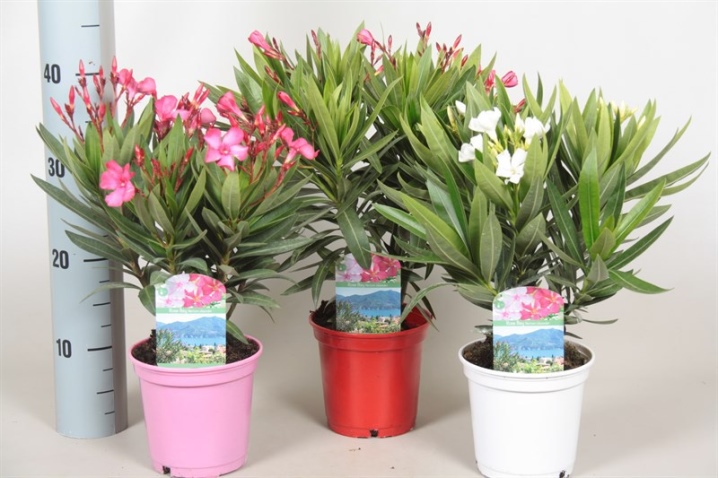
Care precautions
Having decided to grow poisonous flowers, you need to weigh the pros and cons, find out the precautions and understand how to provide first aid if necessary. If no one in the family is at risk (children, animals, allergy sufferers, asthmatics), you can safely get down to business.
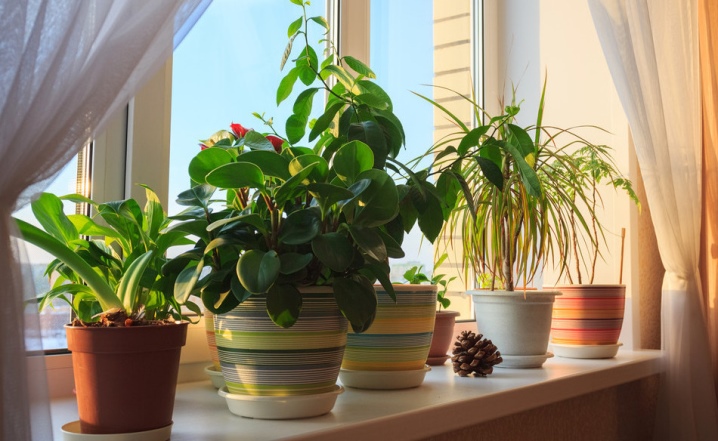
Caring for poisonous flowers requires special actions:
- first you need to find out what toxins the plant contains and where they are concentrated, for example, if a root or bulb is poisonous, you can touch the stems and leaves without gloves;
- if the poison is in all parts, especially in the juice, transplanting and pruning of plants is done with gloves;
- in the absence of gloves, after working with a flower, wash your hands thoroughly with soap and water;
- during work, in no case should you rub your face and eyes with your hands, otherwise, as a result, there may be inflammatory reactions and burns.

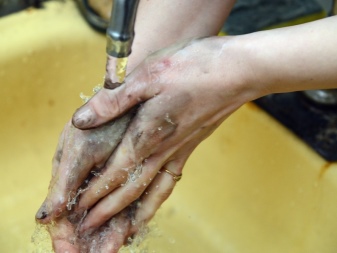
If the poisoning does occur, first aid should be provided:
- juice that gets on the skin should be thoroughly washed off with cold running water and soap;
- the affected eyes are washed with running water for a long time;
- poisons that have entered the body are removed immediately, by causing vomiting, gastric lavage, then sorbents are taken;
- milk and alcohol-containing drinks should not be consumed, otherwise the spread of the poison will accelerate.



If there is no improvement after the measures taken, an urgent need to call a doctor.
In the case of an allergic person, delay can be fatal. The most common causes are choking, heart failure, or kidney failure.

Poisonous plants are fantastically beautiful, and in the absence of people at risk in the house, you should not deny yourself the pleasure of having a gorgeous flower on the windowsill. If precautions are taken, such a neighborhood will not bring trouble, and will give a lot of positives.
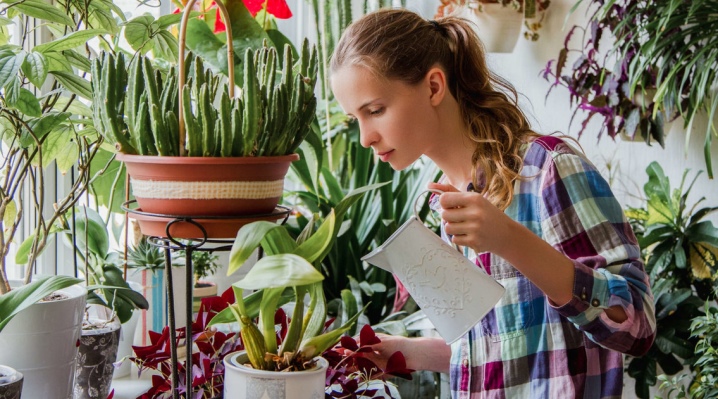
For poisonous indoor plants that can be dangerous to pets, see the video.































The comment was sent successfully.